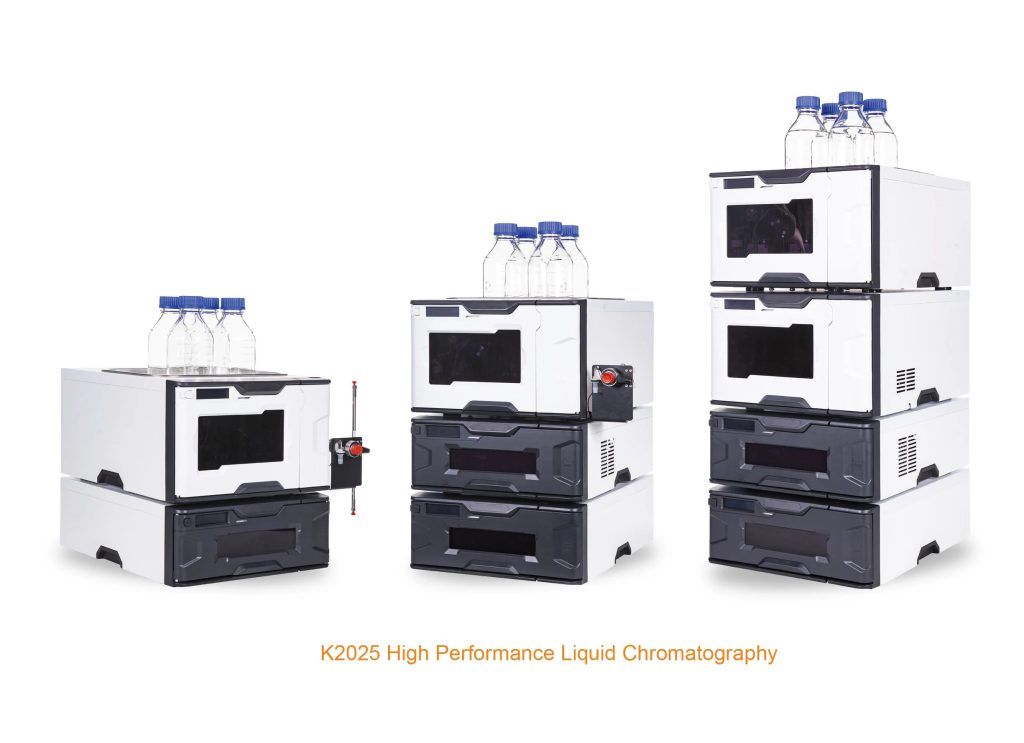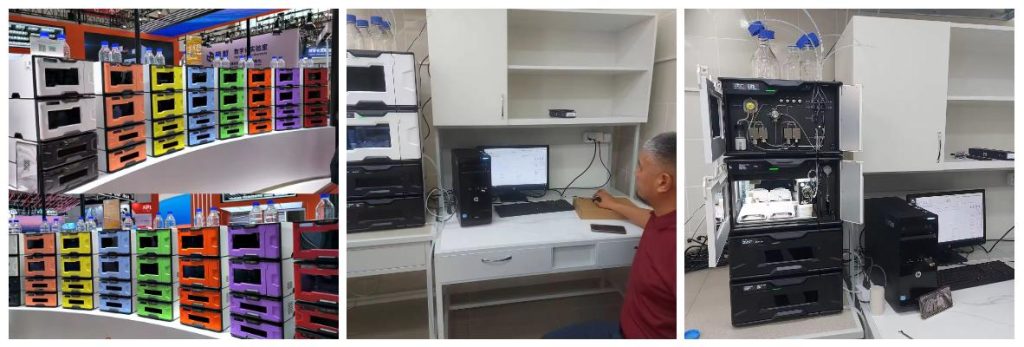Sample Preparation for HPLC Analysis: Step Guides and Common Techniques
High-Performance Liquid Chromatography (HPLC) is a widely used analytical technique for separating, identifying, and quantifying components in complex mixtures. However, to ensure accurate and reliable results, proper sample preparation is essential. This article provides a comprehensive guide to sample preparation techniques for HPLC analysis, offering step-by-step instructions and insights into common techniques.

Fundamentals of Sample Preparation in HPLC
Before delving into specific techniques, it’s crucial to understand why sample preparation is necessary in HPLC analysis. Sample preparation serves several purposes, including removing interferences, concentrating analytes, adjusting pH, and ensuring sample homogeneity. Let’s learn the details:
Why sample preparation is necessary in HPLC analysis?
One of the reason is that Samples introduced directly into the HPLC system often contain complex matrices and various contaminants which can interfere with the accuracy and reliability of analysis. Here are some other reasons:

- Matrix Effects: Real-world samples, such as biological fluids, environmental samples, or complex mixtures, often contain matrix components that can interfere with analyte detection and quantification. Matrix effects can lead to signal suppression or enhancement, resulting in inaccurate quantification. Sample preparation techniques help mitigate matrix effects by removing or reducing interferences, thus improving the accuracy and precision of results.
- Analyte Concentration: Many analytes of interest may be present in low concentrations within the sample matrix, making them challenging to detect or quantify directly using HPLC. Sample preparation techniques, such as extraction or concentration, help increase the concentration of analytes, thereby enhancing the sensitivity of detection and improving the signal-to-noise ratio.
- Sample Compatibility: Samples introduced into the HPLC system must be compatible with the chromatographic conditions, mobile phase, and detection methods used. Some samples may contain components that are incompatible with HPLC, such as particulate matter, high levels of salts, or non-volatile compounds. Sample preparation ensures that the sample is properly prepared for analysis, minimizing the risk of column fouling, detector contamination, or instrument damage.
- Chromatographic Performance: Proper sample preparation contributes to the overall chromatographic performance by improving peak shape, resolution, and retention time reproducibility. By removing interfering substances and preparing the sample in a suitable form for injection, sample preparation helps achieve optimal separation and detection of analytes, leading to robust and reliable chromatographic results.
What are the goals of sample preparation?
Sample preparation in HPLC analysis aims to achieve several key objectives, including:

- Removing Interferences: The primary goal of sample preparation is to selectively remove or reduce interferences from the sample matrix. Interferences may include matrix components, impurities, or co-eluting compounds that can interfere with the chromatographic separation and detection of analytes. By eliminating these interferences, sample preparation enhances the specificity and selectivity of the analysis, improving the accuracy and reliability of results.
- Concentrating Analytes: Sample preparation techniques are employed to concentrate analytes present in low concentrations within the sample matrix. Concentration techniques, such as extraction, evaporation, or preconcentration, help increase the amount of analyte relative to the sample volume, thereby improving the sensitivity of detection and enhancing the analytical signal.
- Adjusting Sample pH: The pH of the sample can significantly impact the ionization state and chromatographic behavior of analytes. Sample preparation may involve adjusting the pH to optimize the retention and separation of analytes on the chromatographic column. This adjustment ensures that analytes are retained and eluted under suitable chromatographic conditions, leading to improved resolution and sensitivity.
- Ensuring Sample Homogeneity: Sample preparation techniques aim to achieve uniform distribution of analytes within the sample matrix to minimize variability and ensure reproducibility of results. Proper mixing, homogenization, or dilution of samples helps ensure that each aliquot analyzed represents the overall composition of the sample, reducing the risk of sampling errors and improving the accuracy of analysis.
- Minimizing Matrix Effects: Sample preparation helps mitigate matrix effects by removing unwanted matrix components that can interfere with the chromatographic separation and detection of analytes. Cleanup steps, such as filtration, centrifugation, or solid-phase extraction, are employed to remove particulate matter, proteins, lipids, salts, and other matrix constituents, minimizing matrix effects and improving the quality of chromatographic results.
Step-by-Step Guide to HPLC Sample Preparation
The step-by-step guide to sample preparation for HPLC analysis involves several key stages to ensure that the sample is properly processed and ready for injection into the chromatographic system. Here’s a detailed breakdown of the sample preparation process:
1. Sample Collection:
- Collect the sample using appropriate sampling techniques to ensure its representativeness.
- Use clean and properly labeled containers to prevent contamination and maintain sample integrity.
- Record relevant information such as sample identification, collection date, and any pre-treatment conditions.
2. Sample Homogenization:
- If the sample is heterogeneous, ensure uniformity by homogenizing it using techniques such as stirring, shaking, or sonication.
- Homogenization helps to minimize variability and ensures that each portion of the sample is representative of the whole.
3. Extraction and Cleanup:
- Depending on the nature of the sample and analytes of interest, select appropriate extraction techniques such as solid-phase extraction (SPE), liquid-liquid extraction (LLE), or protein precipitation.
- Follow established protocols to extract analytes from the sample matrix while minimizing interference from matrix components.
- Perform cleanup steps, such as filtration or centrifugation, to remove particulate matter and clarify the sample solution.
4. Derivatization (if necessary):
- Some analytes may require derivatization to improve their detectability or chromatographic behavior.
- If derivatization is necessary, select suitable derivatization reagents and conditions, and carefully follow the derivatization protocol to ensure optimal results.
5. Concentration:
- Concentrate the analytes extracted from the sample matrix to enhance detection sensitivity, especially for low-abundance analytes.
- Use techniques such as evaporation, solvent exchange, or solid-phase extraction (SPE) to concentrate the analytes while minimizing sample volume.
6. pH Adjustment (if necessary):
- Adjust the pH of the sample solution if necessary to optimize analyte stability, solubility, and chromatographic performance. pH meters can help you to test the pH.
- Use appropriate pH-adjusting agents such as acids or bases and carefully control the pH within the desired range.
7. Solvent Compatibility:
- Ensure that the solvent used for sample preparation is compatible with the mobile phase and chromatographic conditions used in HPLC analysis.
- Select solvents that do not interfere with the chromatographic separation or detection of analytes and minimize the risk of column contamination.
8. Final Sample Preparation:
- Transfer the prepared sample solution into suitable vials or containers for injection into the HPLC system.
- Label the vials with relevant information such as sample identification, concentration, and any additional notes.
- Store the prepared samples under appropriate conditions (e.g., refrigeration, protection from light) to maintain sample stability until analysis.
By following this step-by-step guide to sample preparation for HPLC analysis, analysts can ensure that the samples are properly processed, free from interference, and compatible with the chromatographic system, thereby facilitating accurate and reliable analytical results.

Common Sample Preparation Techniques for HPLC
Common sample preparation techniques for HPLC analysis encompass a variety of methods designed to extract, purify, and concentrate analytes of interest from complex sample matrices. Here are some widely used techniques:
1. Solid-Phase Extraction (SPE):
- SPE involves the selective retention of analytes onto a solid-phase sorbent while unwanted matrix components are washed away.
- Different sorbent materials (e.g., silica, reversed-phase, ion-exchange) are available to accommodate various analyte properties.
- SPE cartridges or plates are commonly used, allowing for batch or automated processing.
2. Liquid-Liquid Extraction (LLE):
- LLE relies on the partitioning of analytes between two immiscible liquid phases.
- The sample is mixed with an organic solvent (extraction solvent) and an aqueous phase, and analytes distribute between the two phases based on their solubility.
- After separation, analytes are recovered from the organic phase for subsequent analysis.
3. Protein Precipitation:
- Protein precipitation involves the addition of a precipitating agent (e.g., organic solvent, acid, salt) to denature proteins and precipitate them out of solution.
- This technique is commonly used for biological samples to remove proteins and other macromolecules, simplifying the sample matrix for analysis.
4. Filtration:
- Filtration is employed to remove particulate matter and debris from the sample solution.
- Membrane filters with appropriate pore sizes are used to retain particles while allowing the passage of the sample solution.
- Filtration is essential for preventing column clogging and ensuring the integrity of the chromatographic system.
5. Dilution:
- Dilution is a simple technique used to reduce the concentration of analytes in the sample while maintaining their relative proportions.
- Dilution can help bring analyte concentrations within the linear range of the detector, especially for samples with high analyte concentrations.
6. Solid-Phase Microextraction (SPME):
- SPME involves the extraction of analytes from the sample matrix onto a coated fiber stationary phase.
- The fiber is exposed to the sample, allowing analytes to partition between the sample matrix and the fiber coating.
- After extraction, the fiber is desorbed directly into the HPLC system for analysis.
7. Derivatization:
- Derivatization involves chemically modifying analytes to enhance their chromatographic properties or detectability.
- Common derivatization reactions include the addition of fluorescent or UV-absorbing groups, making analytes more amenable to detection by HPLC.
8. Sample Clean-up:
- Various sample clean-up techniques are employed to remove unwanted matrix components or interferences.
- These techniques may include solid-phase extraction, precipitation, filtration, or centrifugation, depending on the nature of the sample matrix and analytes of interest.
By employing these common sample preparation techniques, analysts can effectively extract, purify, and concentrate analytes from complex sample matrices, facilitating accurate and reliable HPLC analysis. The choice of technique depends on factors such as analyte properties, sample matrix composition, and analytical objectives.
Conclusion
Sample preparation is a critical step in HPLC analysis, significantly impacting the accuracy, precision, and reliability of results. By following step-by-step guides and utilizing common sample preparation techniques effectively, analysts can ensure optimal sample preparation for HPLC analysis. Understanding the fundamentals and selecting appropriate techniques based on sample characteristics are key to achieving successful HPLC analysis.





